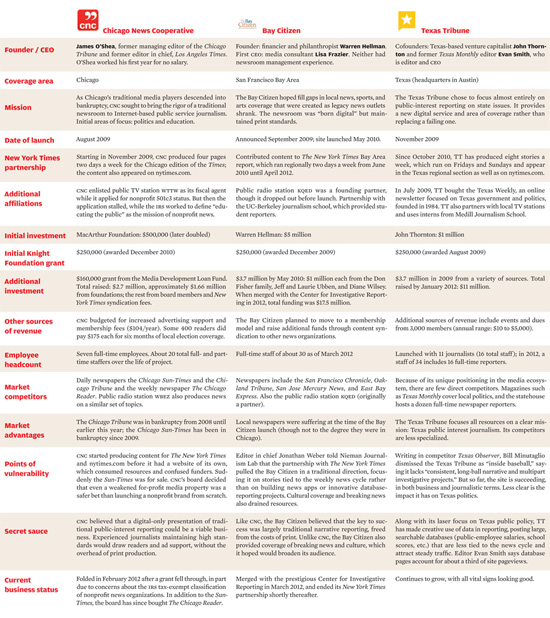Too often, conversations about the evolution of media seem to pit defensive, old-school journalists against arrogant, tech-savvy upstarts. But in late 2009, the factions combined forces in three well-funded, digital-first news organizations: The Chicago News Cooperative, the Bay Citizen (of San Francisco), and the Texas Tribune merged the possibilities opened up by new digital technology with the experience and reporting chops of professional reporters. All three also formed partnerships with The New York Times, feeding regional coverage to its zoned editions in those cities.
Three years later, only one survives in the form in which it was launched. The Chicago News Cooperative is kaput, because its backers ran off with the Chicago Sun-Times; the Bay Citizen was folded into the older, larger Center for Investigative reporting. The Texas Tribune, by most accounts, is thriving. Of course, each startup was subject to local market conditions—but there are a few lessons to be drawn:
- • Make sure there’s solid, long-term funding in the bank, and watch your burn rate.
- • Don’t depend too much on a few foundations.
- • Decide quickly if the prestige of a partnership with a traditional news organization is worth the pressure of conforming to its expectations.
- • Find a point of difference in your market, and focus tightly!
- • Find ways to innovate in the digital realm—do something different. Traditional journalism, even done at lower cost, might not be enough.


